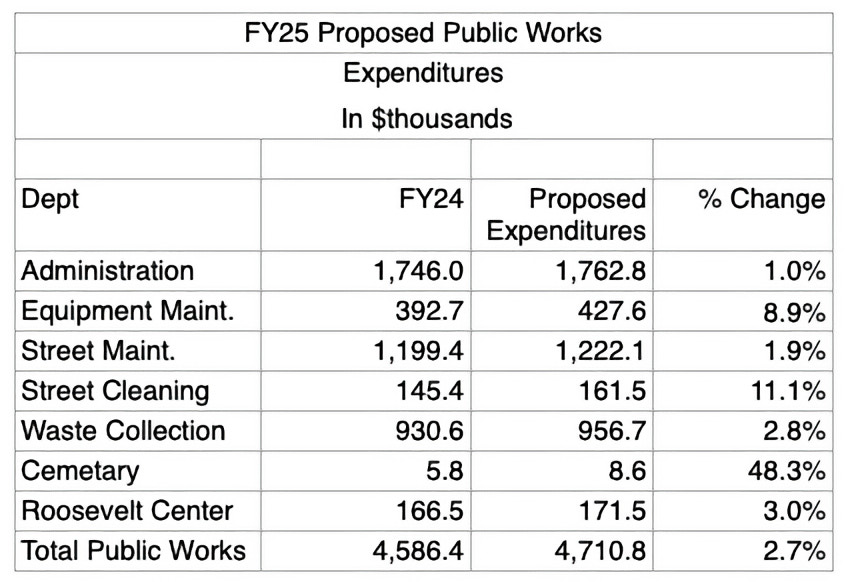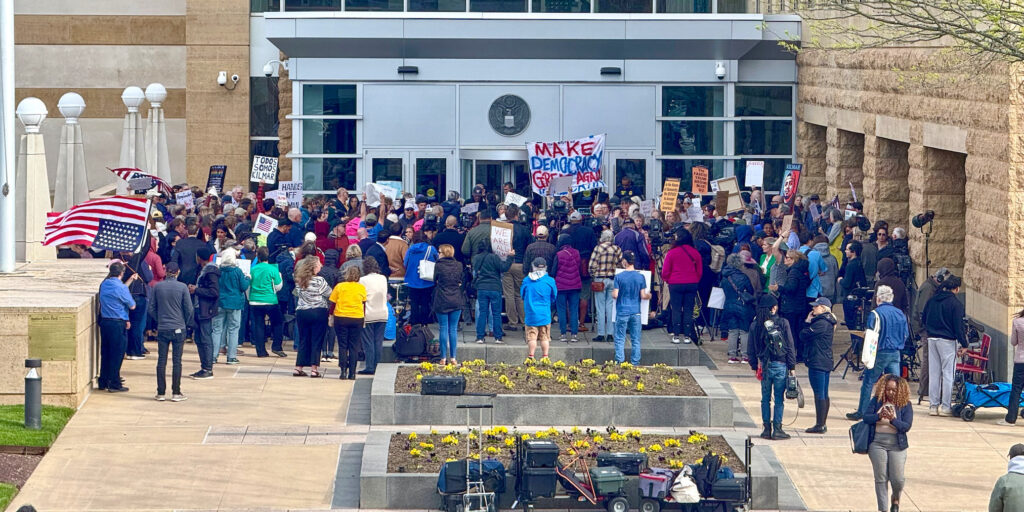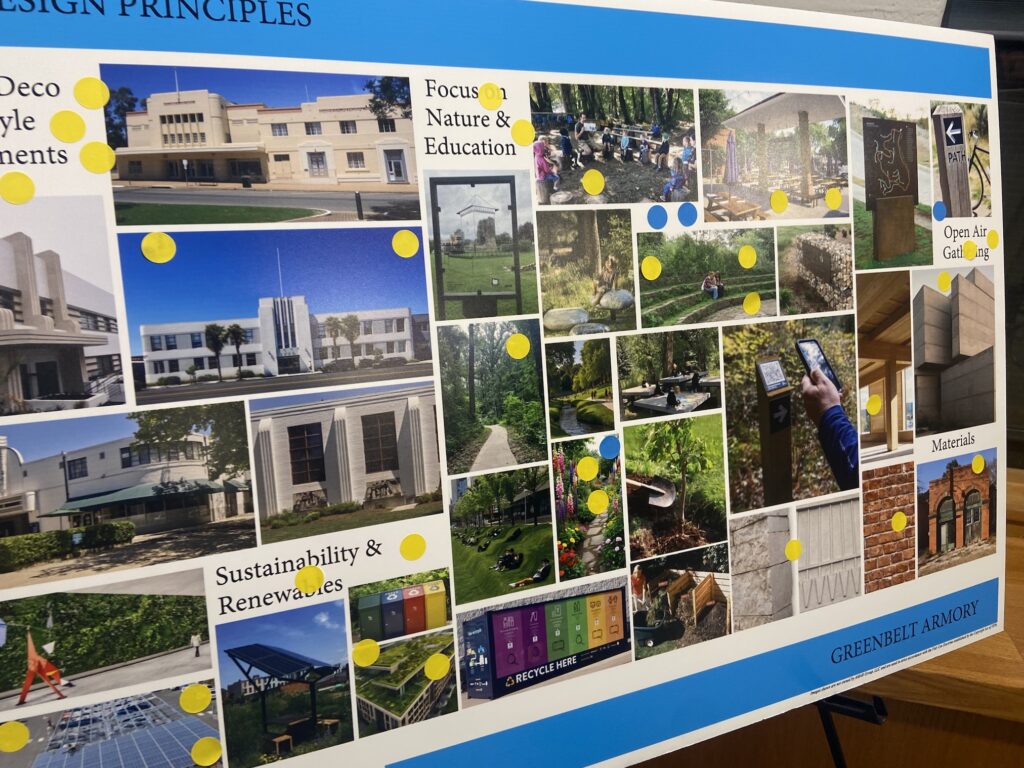City Manager Josué Salmerón’s budget proposal calls for a 2.7 percent increase in the Public Works budget, with expenditures increasing from $4.586 million in the adopted budget for this fiscal year to $4.711 million in FY25, which begins on July 1. A breakout of expenditures by major budget category is shown in the table on page 12. [Image at left on this web page]
The Public Works Department has a wide range of responsibilities including maintenance of all city buildings and grounds, waste collection and recycling, sustainability, the Greenbelt Connection and maintaining 26 miles of city streets and 532 acres of city parks.
Staffing will decrease by one as the supervisor positions for parks and playgrounds and for horticulture will be merged into one position.
Assistant City Manager Timothy George and public works management met with the Greenbelt City Council on April 17 to review this budget. Salmerón was ill and did not attend.
Some department activities such as the Greenbelt Connection (budgeted under “Miscellaneous”), the Greenbelt Cemetery (“Other Funds”) and certain maintenance activities are reflected in other budget categories. (For example, maintenance of the Municipal Building is covered in the General Governments budget.)
Revenues
Some activities generate revenue to wholly or partially offset costs. Waste collection and recycling fees, the landfill disposal rebate and sale of recyclable materials are expected to bring in $748,900, unchanged from the current budget. The sustainability and recycling area has garnered $384,770 in grants for specific projects. An additional $300,000 grant was recently received.
Challenges
Acting Public Works Director Brian Kim said the department faces three challenges. The first is ailing infrastructure. A significant portion of the budget is devoted to maintaining and upgrading infrastructure and equipment. “As these assets continue to deteriorate,” he wrote, “the demands for maintenance and upgrades will only escalate,” further straining the department’s ability to maintain continuity of services.
One major example of this is the indoor pool at the Aquatic & Fitness Center. The pool is not draining properly, according to Kim, leading to failure of the lining of the pool and deterioration of the outside wall. Kim said the department is currently doing an engineering study and the cost of the repair is not yet incorporated into the budget. The expected extended closure of the pool will also reduce pool revenues.
Other Challenges
The department also needs to invest in budget lines affecting training and education to offset the loss of institutional knowledge driven by retirements and organizational changes, Kim noted.
Increasing technology, he said, is affecting many aspects of the department’s operations from timekeeping to maintaining equipment, vehicles and tools. “To remain current and efficient, it’s essential that our workforce is equipped with the necessary expertise to adapt to these technological advancements,” he wrote.
Goals
Like most other city departments, Public Works is managing a number of American Rescue Plan Act funded projects and is working to ensure all funds are encumbered by the deadline. Other objectives include: 1) reviewing how the department is organized with the possible retirement of several “deep-rooted” employees, 2) expanding community knowledge and participation in recycling, 3) incorporating additional alternative fuel vehicles into the citywide fleet and 4) reducing fuel consumption and greenhouse gas emissions.
Sustainability
Sustainability Coordinator Luisa Robles reported that the curbside composting collection pilot is “going great.” There will be a ribbon-cutting event for the new composting facility at Trinity Church on May 3. The contractor reports that Greenbelt’s collection is the cleanest among the communities participating in the pilot with the main contaminant being glossy paper, such as popcorn bags or ice cream containers. On average, 90 percent of participants are setting out their compostables each time.
There are currently 200 participants. The city will be seeking to recruit 200 more. Once the pilot ends in about 16 months, the city will need to consider whether to offer the program as a city service and at what cost.
Robles said that the solar farm should begin operating in the last quarter of calendar 2024. The farm is in Oxon Hill near the border with the District of Columbia.
Waste Collection
Waste collection service fees and other revenue were budgeted to fall short of expenditures by $181,700 in the current fiscal year and are projected to fall short by $207,800 in FY25. This compares to a shortfall of $50,582 in FY22. Some shortfall is expected as it reflects materials discarded by the city. But Councilmember Kristen Weaver noted that the shortfall is consistently increasing and that the fees may need to go up at some point.
Connection
For the current fiscal year, the budget anticipated rider fares to cover 5 percent of the service’s cost. It is now estimated that fares will cover 4 percent. Salmerón’s FY25 budget calls for fares to cover 3.5 percent of costs. Kim said the service is generally fully booked with most riders being elderly or needing rides to medical appointments. Seniors pay $1 per ride while other riders pay $2.
Animal Shelter
The existing shelter building is over 20 years old, and Kim said it is no longer feasible to repair it. Instead he recommends replacing it using the capital projects fund.
Cherrywood
Director of Planning and Community Development Terri Hruby said that the Cherrywood Complete Streets project has been deferred until the schedule of work related to the FBI building is known.




